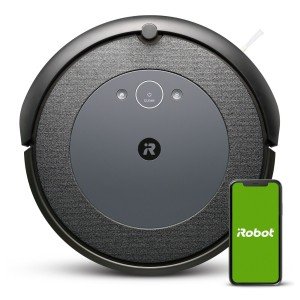The Rise of Automatic Hoover Robots: Revolutionizing Home Cleaning
In today's fast-paced world, technology continues to improve the way we live and work. Among the developments making a significant impact on households are automatic hoover robots, typically referred to merely as robot vacuums. These intelligent cleaning makers guarantee not only benefit but also efficiency in keeping clean home. This article checks out the advancement, benefits, constraints, and future of automatic hoover robots.
The Evolution of Automatic Hoover Robots
The principle of automated cleaning devices goes back to the early 20th century, however it wasn't till the arrival of sophisticated robotics, sensing units, and synthetic intelligence that robot vacuums ended up being viable. The following table illustrates key turning points in the development of automatic hoover robots:
| Year | Turning point |
|---|---|
| 1996 | The first automatic vacuum is presented by Electrolux. |
| 2002 | iRobot introduces the Roomba, a consumer-grade robot vacuum. |
| 2010 | Intro of innovative mapping innovation and crash sensors. |
| 2016 | Robotic vacuums start integrating with smart home systems. |
| 2020 | Increased adoption of AI and artificial intelligence for better cleaning algorithms. |
How Automatic Hoover Robots Work
Automatic hoover robots operate using a mix of sensing units and algorithms to navigate home spaces. Below are key components that contribute to the functionality of these makers:
- Sensors: Lidar (light detection and varying), infrared, and cliff sensing units help the robot map the area and avoid barriers.
- Mapping Technology: Many models now use innovative mapping abilities, making it possible for efficient navigation through spaces, identifying high-traffic areas, and remembering the layout of your home.
- Cleaning Modes: Most robot vacuums come with multiple cleaning modes, consisting of spot cleaning, edge cleaning, and organized navigation.
- App Connectivity: Many modern-day designs enable control via mobile phone apps, allowing users to schedule cleanings and personalize settings from another location.
Benefits of Automatic Hoover Robots
Automatic hoover robots use a wide variety of benefits, making them appealing to a substantial variety of customers. Here are some compelling advantages:
- Time-Saving: Users can set up cleansings and multitask while the robot does the work.
- Consistent Cleaning: Regularly scheduled cleansings make sure that homes remain neat.
- Accessibility: Robots can clean up hard-to-reach areas like under furnishings without manual effort.
- Smart Features: Integration with smart home systems permits voice control and more advanced scheduling options.
Limitations of Automatic Hoover Robots
In spite of their advantages, automatic hoover robots have specific downsides that users require to think about:
- Battery Life: Most robot vacuums need recharging, which can interfere with cleaning cycles.
- Suction Power: While efficient for light debris, they might have problem with deeply embedded dirt or thick carpets.
- Maintenance: Regular cleaning of brushes and filters is necessary to preserve performance.
- Expense: High-end models can be expensive, which may be a barrier for some customers.
Future of Automatic Hoover Robots
As technology continues to advance, there are a number of exciting prospects for automatic hoover robots. Here's what to expect in the coming years:
- Enhanced AI: Improved machine finding out algorithms could allow robots to adjust their cleaning strategies based on the particular layout and dirt levels in a home.
- Multi-Functionality: Future designs may not only vacuum but also mop, decontaminate surfaces, or even supply real-time ecological monitoring.
- Integration with Home Automation: Increased interoperability with different smart home systems will likely improve control and performance.
- Sustainability: Future versions may focus on environmentally friendly functions, including eco-friendly parts and energy-efficient operations.
Frequently Asked Questions (FAQs)
1. How often should I run my automatic hoover robot?
- It mainly depends upon your lifestyle, but running it a couple of times each week can assist maintain a clean home, particularly in high-traffic locations.
2. Can I use a robot vacuum on carpets?
- Numerous robot vacuums are created to work on carpets, however efficiency may vary depending upon the density and thickness. Always inspect the producer's requirements.
3. Do robot vacuums work well with pet hair?
- Most modern-day models are equipped with brushes and strong suction power particularly developed to manage pet hair successfully.
4. Can relevant resource site arrange cleansings from another location?
- Yes, lots of robot vacuums come with smartphone apps that allow users to set up cleanings and control features from anywhere.
5. How do I maintain my robot vacuum?
- Frequently clean the brushes, empty the dustbin, and replace filters according to the producer's recommendations to ensure optimal performance.
Automatic hoover robots represent a considerable shift in the method families approach cleaning. By combining Our Web Page with easy to use features, these devices not just offer convenience but also improve performance in keeping tidy home. As improvements continue, the future of automatic hoover robots looks promising, potentially using even more intelligent services for modern homes.
In a world where time is of the essence, the role of technology in home care is ending up being increasingly essential, making automatic hoover robots an outstanding investment for those wanting to streamline their lives while ensuring tidiness.

